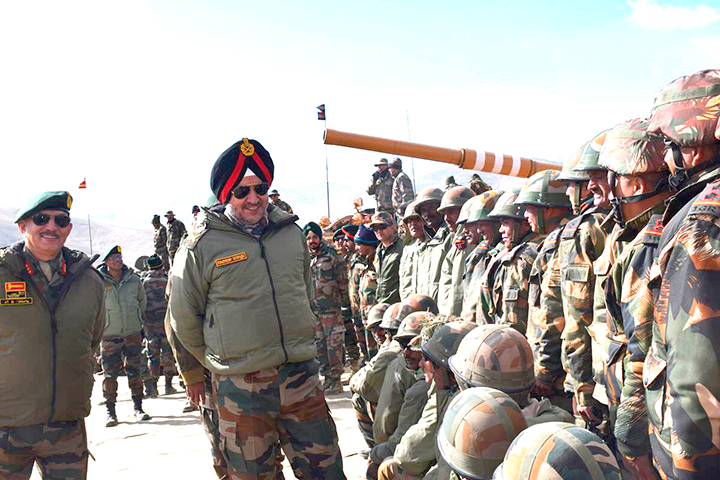
India-China face off:Was it inevitable?
Today’s geo-politics is revolving around new systems with new complexities.
As long as we remain caught in generalisation, the fog in our minds will only get thicker.
Advertisement
Let’s switch to current reality, we might find some plausible answers to the five Sino-India broader questions that have been preying on the minds of millions.
China remains heavily dependent on Middle Eastern oil, with up to 80 per cent of its energy supply passing through the Strait of Malacca.
Any disruption – ranging from piracy to fears of a potential naval blockade by the United States or India – will have an adverse impact on China’s long-term food and energy security.
The much debated project of One Belt One Road {China’s BRI (Belt and Road Initative) was formerly known as OBOR} (OBOR) provided the answer to persistent problems of China—the alternate route for energy and trade and development of western hinterland.
China so far has invested close to $400 billion on its flagship programme, the China Pakistan Economic Corridor (CPEC) on the development of Gwadar Port and the building of highways across Pakistan (through Gilgit-Baltistan) to connect with Xinjiang and Tibet.
China is getting increasingly sensitive about the security of the corridor, which is passing under the combat range of the Indian army after the building of new roads along Line of Actual Control (LAC).
Interests
From Beijing’s perspective, any Indian attempt to take over Gilgit-Baltistan would wreck CPEC. The Chinese have also been uncomfortable with infrastructure development along the LAC with India, especially due to the pressure it imposes on Aksai Chin.
As per analysts, infrastructure development on the Indian side of LAC, Doklam standoff in 2017, the construction of major bridges on the arterial roads and the revival of air strips along the border by the Indian army, raised alarms in Chinese establishments.
The People’s Liberation Army
(Armed Forces of China) PLA moved its forces to the western borders with India directly from a massive military exercise by Western Theatre Command to strengthen tactical locations.
Full-scale war?
India and China are divided by natural borders of high mountains. Both the countries know that it’s not easy to retain the captured territory by either of them because harsh weather and rugged mountains will cut-off their supply lines for major parts of the year.
Militarily, both are nuclear armed countries and cannot be pushed by each other beyond an extent. Even in conventional war, no side has a clear edge in mountains.
In the current situation, both China and India may try to secure strategically favourable locations on the high mountains. A complete disengagement may take very long this time.
Is the world heading for ‘New Cold War’ era?
Some media experts see the US support as one of the main drivers behind India’s firmness and aggression in dealing with its border issues with China, but that seems far from the truth.
In reality, business interests are playing a major role in the international arena and these are not favourable at the moment for a bipolar world.
It is difficult foresee a return to a bipolar world, even amid the sharpening contradictions between China and the West.
Half of the 20 largest economies of the world are non-western now. Diffusion of technology and demographic differentials will also contribute to the broader spread of influence.
The growing voices in the West that the US should forge a deep strategic alliance with India. This also gels with the emerging view of India being a natural ally of the United States, thus a bulwark against China in Asia.
Caution
While this may come as a big boost to India’s position in the region, New Delhi must tread this path cautiously.
The ‘New Cold War,’ if it ever becomes a reality, would be completely different from the Cold War of the 20th century. The US no longer enjoys the same hegemonic status as it did decades ago. Its position as the leader of the liberal international order has long been eroded.
India must, as it is trying to, handle its bilateral issues with China in an independent manner without falling prey to any narrative or any alliance.
Alliance with third country from either side may ignite multi-front war for India, as well as for China. It’s absolutely in the interest of the two Asian giants to not allow shifting war theatre from West Asia to East Asia.
Eastwards migration of the war zone will only revive ‘Arms & Ammunition’ industry of the West.
The writer is a senior editor with The Times of India. He lives in Ladakh, India
Email: [email protected]




